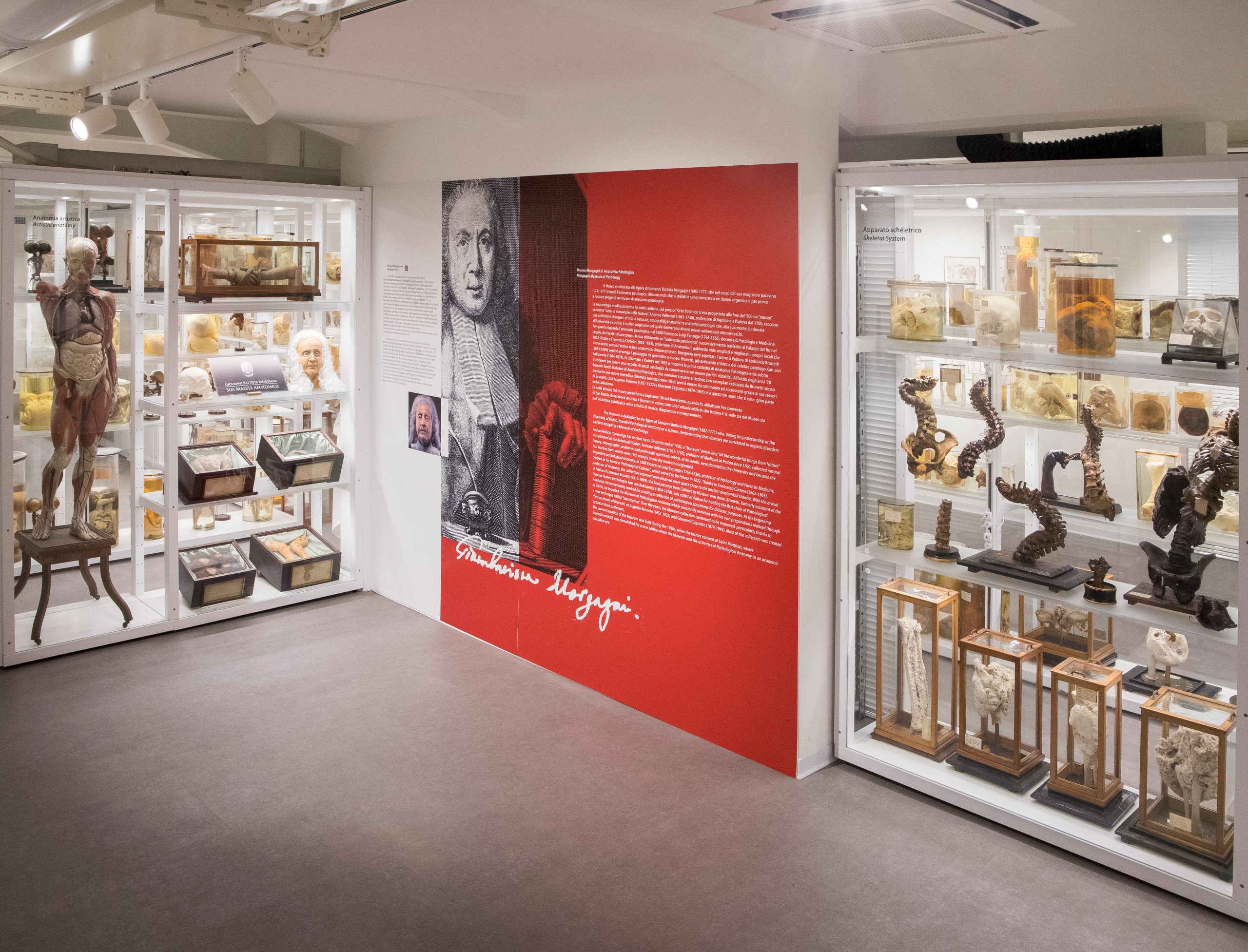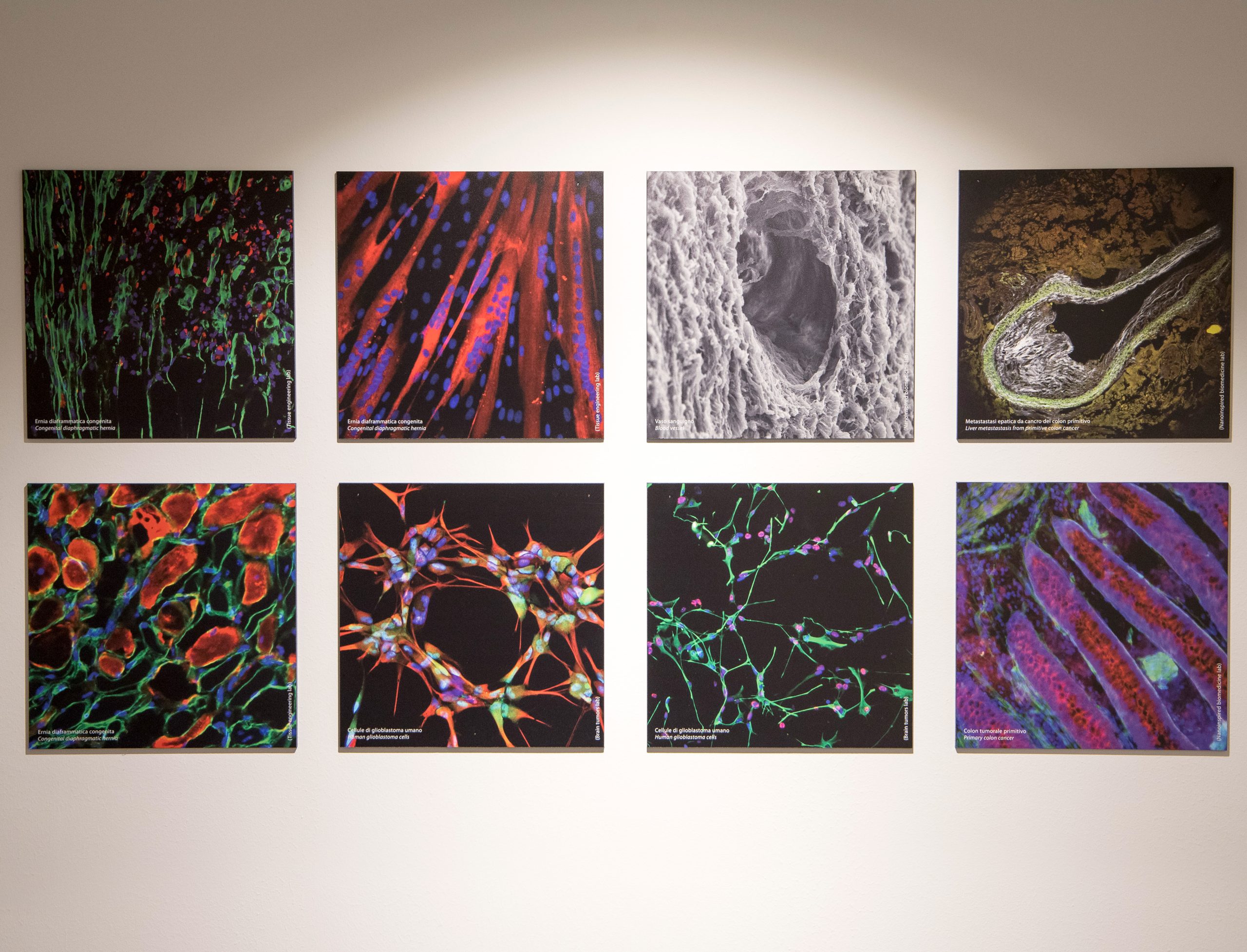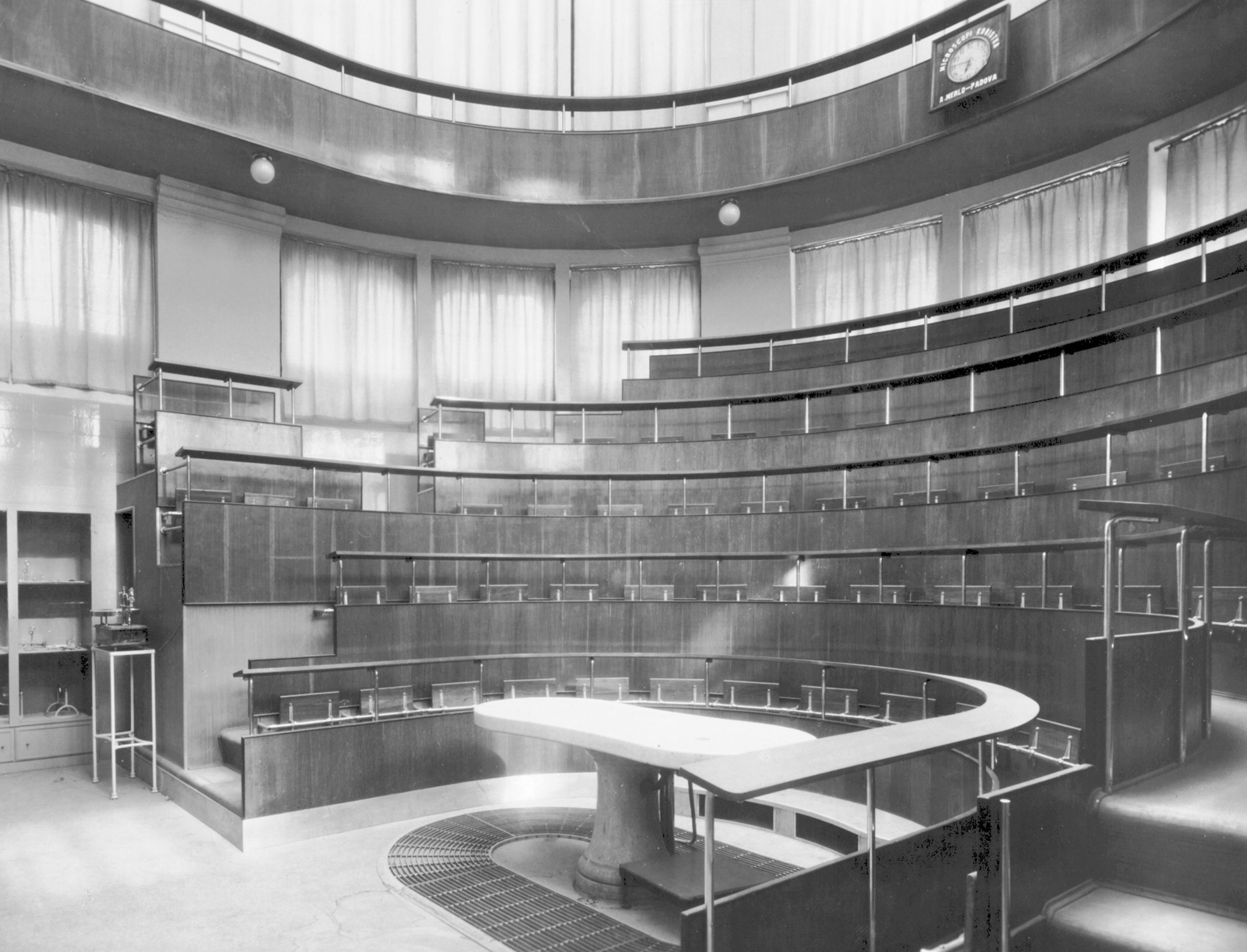The “G. B. Morgagni” Museum of Human Anatomy houses an important historical collection of anatomical and pathological specimens, divided into two sections: Pathological Anatomy, which was renovated and opened to the public in 2018, and Normal Anatomy, which is currently being studied for a future opening. Founded around 1860 by Lodovico Brunetti, the first professor of pathological anatomy at the University of Padua, the museum is an important testimony to the medical and scientific progress of the 19th century.
The collection includes more than 1,300 human pathological specimens dating from the 18th to the 20th centuries, preserved using various techniques: liquid, dry or tanning, an innovative process invented by Brunetti himself. The new layout, created during the 2018 renovation, ensures optimal enjoyment both for the general public and for educational and scientific purposes, allowing every visitor to explore the complexity of the human body through a rigorous and accessible approach.
Ongoing conservation and research activities, also through multidisciplinary collaborations, allow the Museum to maintain its educational mission, enhancing each artefact and enriching the visitor’s experience with new knowledge and perspectives.
VISIT THE MUSEUM
Pathological Anatomy Section
Open only for guided tours by reservation with at least one week’s notice and subject to availability
- on Tuesday | 10.00 – 17.00
- and Thursday | 10.00 – 17.00
Please note that the Pathological Anatomy section of the Museum may not be suitable for particularly sensitive visitors, pregnant women, and people under 16 years of age, due to the presence of anatomical preparations representing advanced pathologies, congenital anomalies, and significant bodily alterations. Access is therefore not recommended for these groups of people, to ensure a visit in line with the expectations and sensitivity of the public.
It is also specified that visits are exclusively guided, to offer a more in-depth and engaging experience.
EVENTS
Guided tour of the Pathological Anatomy section of the Morgagni Museum – Guided tour in English
Free guided tour in English with the curator at the Pathological Anatomy section of the Morgagni Museum of Human Anatomy
Visita al Museo Morgagni di Anatomia Umana sezione Anatomia Patologica
Visita guidata gratuita con il curatore alla sezione Anatomia Patologica del Museo Morgagni di Anatomia Umana
DISCOVER THE MUSEUM
The guided tour of the Pathological Anatomy section of the Morgagni Museum offers the opportunity to explore a unique collection of anatomical preparations. These human remains illustrate the living conditions and common diseases between the 18th and 19th centuries, while highlighting the progress of medicine in preventing and treating pathologies. The tour testifies the evolution of medical treatment for ancient diseases and their impact on daily life in the past.
The collections
Over 1300 pathological preparations and 200 human remains of normal anatomy, a unique heritage that tells the evolution of medicine through scientific preservation.
Research
The Morgagni Museum contributes to historical-medical research with publications, projects and conferences on anatomy, pathology and conservation.
History
From Vallisneri to Brunetti, the history of the museum reflects the progress of Paduan medicine, from the collection of the first anatomical preparations to the development of pathological research.
Our Team
A museum thrives thanks to the people who care for it, bring it to life, manage it, and sharing its stories, as well as those who visit, engage with it, and spread the word.





